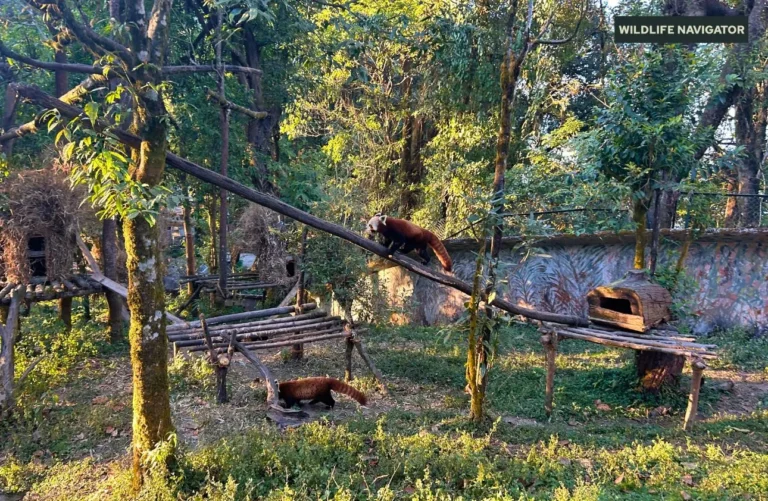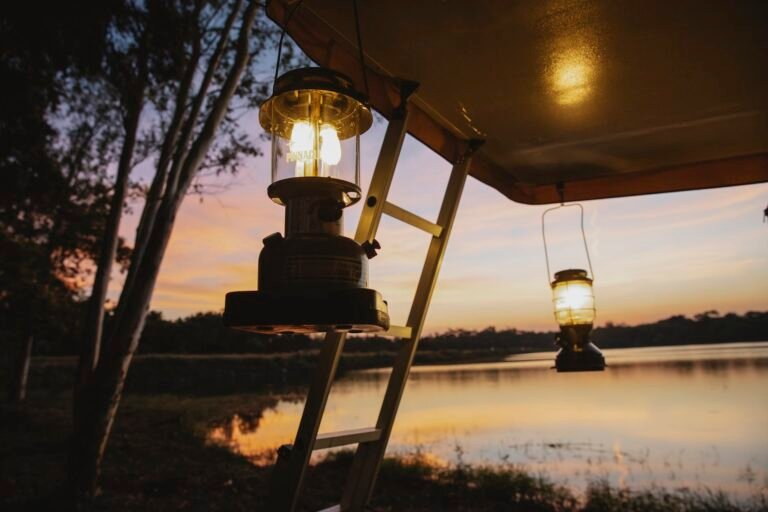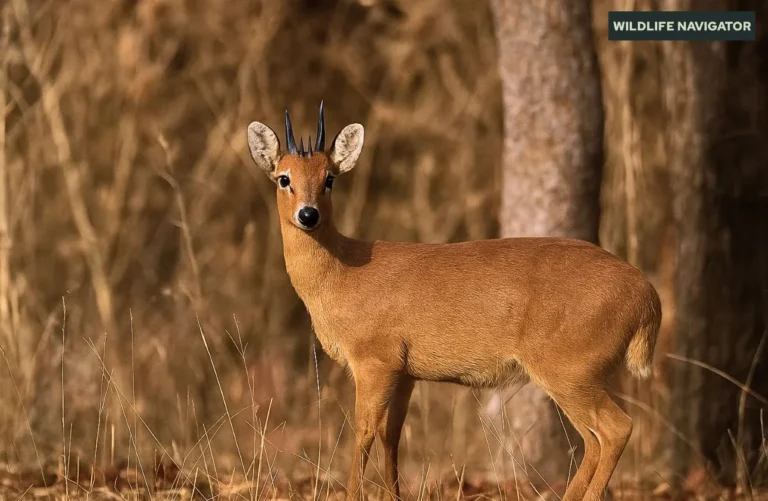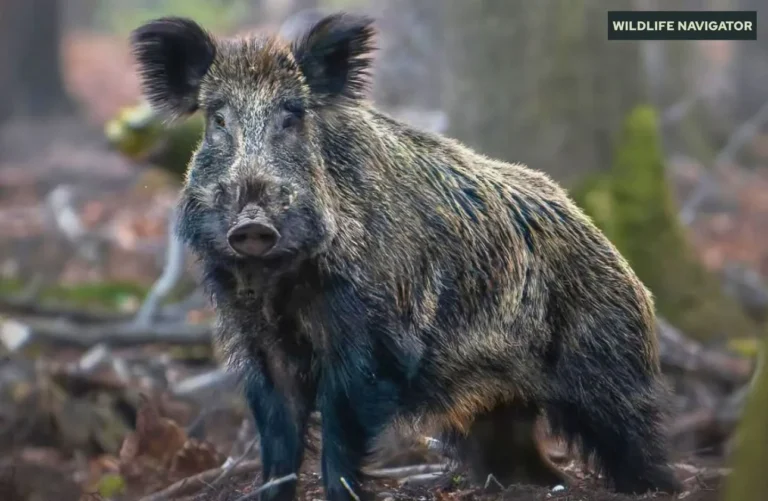Indira Gandhi Zoological Park, Visakhapatnam: Timings, Tickets & Wildlife Guide
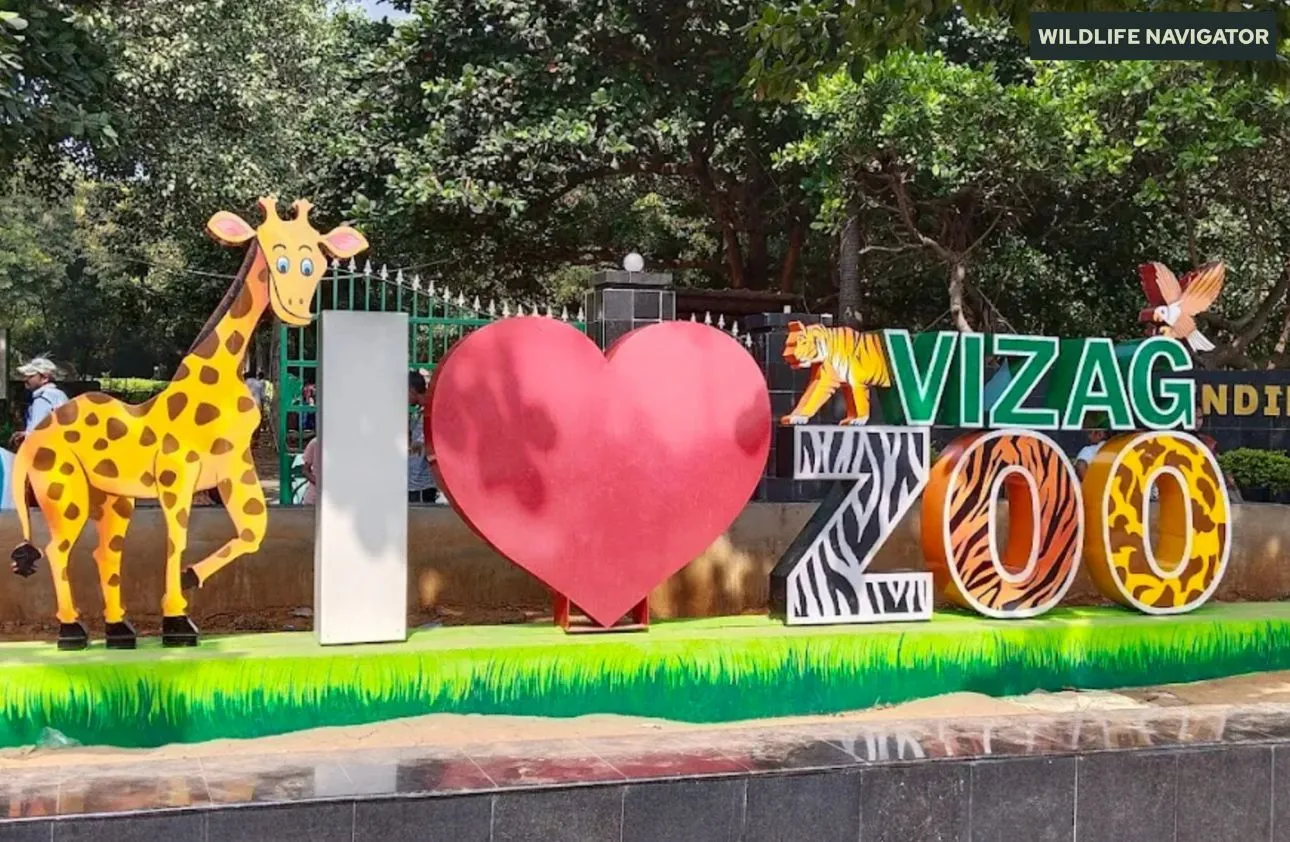
Indira Gandhi Zoological Park, located in the lush green surroundings of Visakhapatnam, is one of the most popular wildlife attractions in Andhra Pradesh. Spread across a vast area inside the scenic Kambalakonda Reserve Forest, the zoo offers a unique blend of natural beauty and rich biodiversity. Unlike many urban zoos, IGZP is wrapped by hills, valleys, and dense woodland, giving visitors the feel of being inside a natural forest rather than a typical artificial zoo setup.
Established to promote wildlife conservation, education, and recreation, the zoo today stands as one of the largest zoological parks in South India. It is home to a diverse collection of mammals, birds, reptiles, and exotic species, making it a favourite destination for families, wildlife enthusiasts, photographers, and nature lovers. Whether you’re exploring the big cat enclosures, watching colourful birds, or enjoying peaceful walks along tree-lined pathways, the park promises a refreshing escape from the city and an immersive wildlife experience.
History, Background & Location
Indira Gandhi Zoological Park was established in 1977 with the aim of creating a natural sanctuary for wildlife within the fast-growing coastal city of Visakhapatnam. Named in honour of former Prime Minister Indira Gandhi, the zoo was developed as part of a wider vision to conserve regional fauna, spread awareness about endangered species, and offer people a chance to connect with nature.
What sets this zoo apart is its strategic location within the Kambalakonda Reserve Forest, a thriving ecosystem that enhances the quality of habitats inside the park. The surrounding forest acts as a natural buffer, allowing animals to live in spacious and semi-natural enclosures that closely resemble their wild homes. This setting not only supports healthier animal behaviour but also provides visitors with an immersive jungle-like experience.
Situated along National Highway 5, the zoo is easily accessible from all major points in Visakhapatnam. It lies approximately 11 km from Visakhapatnam Railway Station and around 17 km from Visakhapatnam International Airport. The rolling hills, dense vegetation, and serene environment make it a refreshing getaway for locals and tourists alike.
Wildlife Diversity: Major Animals and Species
Indira Gandhi Zoological Park is home to an impressive variety of species, representing mammals, birds, reptiles, and select exotic animals. The enclosures are spacious and designed to mimic natural habitats, allowing visitors to observe wildlife in a comfortable, nature-rich setting.
Big Cats
The big cat section is one of the biggest attractions here.
- Bengal Tiger – the star species of the zoo, often seen relaxing in shaded areas or walking along their enclosures.
- Indian Leopard – agile, powerful, and known for their elusive behaviour.
- Jaguar or Exotic Big Cats (if present during your visit) – sometimes housed as part of the zoo’s exchange programs.
Herbivores
Large herbivores form a peaceful, picturesque part of the zoo landscape.
- Sambar Deer
- Spotted Deer (Chital)
- Barking Deer
- Gaur (Indian Bison)
- Blackbuck
- Nilgai (Blue Bull)
- Elephants – occasionally seen during feeding hours and enrichment activities.
Primates
The primate zone is always lively and fun, especially for families.
- Bonnet Macaque
- Rhesus Macaque
- Common Langur
These primates display playful behaviour, making them a crowd favourite.
Birds
The aviary and waterbird sections are a paradise for bird lovers.
- Indian Peafowl (always a visitor favourite)
- Rosy Pelicans
- Ostriches
- Parakeets & Macaws (colourful and charismatic)
- Eagles, Kites & Owls (in raptor enclosures)
- Water Birds – herons, storks, and cormorants are enjoying the ponds.
Reptiles
The reptile house gives a close look at cold-blooded species.
- Mugger Crocodiles
- Turtles & Tortoises
- Snakes – including venomous species like cobras and vipers, and non-venomous varieties like rat snakes and pythons.
Special or Exotic Attractions
Some species are brought through exchange programs or special breeding initiatives. These may vary but often include:
- Hippopotamus
- Zebra
- Exotic Birds like Emus or African grey parrots
Together, these species make IGZP a vibrant destination for wildlife observation and education.
Zoo Zones and Key Attractions
Indira Gandhi Zoological Park is thoughtfully divided into multiple themed zones, each designed to offer an immersive wildlife experience. These zones help visitors navigate easily while ensuring animals are grouped based on habitat type and behavioural needs. The wide pathways, naturally shaded areas, and forested ambience make every section enjoyable to explore.
Carnivore Zone
This is one of the star attractions of IGZP.
- Houses tigers, leopards, jackals, foxes, and other predators.
- The enclosures are large, enriched with vegetation, rocks, and climbing structures.
- Visitors often get clear glimpses of big cats during resting, feeding, or active hours.
Herbivore Section
A calm and open landscape featuring peaceful grazers.
- Includes spotted deer, sambar, blackbuck, gaur, nilgai, and elephants.
- These enclosures provide natural grasslands and shaded resting spaces.
- Ideal for families and photographers who enjoy observing relaxed animal behaviours.
Primate Complex
A lively zone filled with energetic tree-dwellers.
- Home to bonnet macaques, rhesus macaques, and langurs.
- Their playful antics—jumping, grooming, and communicating—are a delight to watch.
- Enclosures include climbing frames, ropes, and platforms.
Reptile House
A must-visit for reptile enthusiasts.
- Exhibits various snakes, turtles, tortoises, and crocodiles.
- Indoor displays provide educational information about each species.
- Offers a safe yet fascinating close-up look at venomous and non-venomous reptiles.
Aviary and Water Bird Zone
Colourful, vibrant, and soothing to explore.
- Features peacocks, macaws, parakeets, pelicans, herons, storks, and other bird species.
- Waterbird ponds attract species that love wading and swimming.
- The aviary’s greenery creates a peaceful ambience for birdwatching.
Butterfly Park
Some setups include a small butterfly garden.
- Hosts native butterfly species supported by nectar-rich plants.
- A great spot for nature photography.
Children’s Park & Education Zone
Designed to engage young visitors.
- Includes play areas, animal-themed displays, and interactive boards.
- Helps kids learn about biodiversity in a fun and visual manner.
Conservation, Research & Education Initiatives
Indira Gandhi Zoological Park is not just a recreational destination—it plays a crucial role in wildlife conservation, scientific research, and environmental education. The zoo actively participates in multiple programs aimed at protecting endangered species, raising ecological awareness, and contributing to long-term biodiversity preservation.
Endangered Species Breeding Programs
IGZP takes part in several captive breeding initiatives designed to increase the population of threatened wildlife.
- Breeding efforts often focus on Indian species like the Bengal tiger, leopard, and various deer species.
- Special attention is given to creating enriching, natural environments that encourage healthy breeding behaviour.
- These programs help maintain genetic diversity and may support future reintroduction plans.
Wildlife Rescue and Rehabilitation
The zoo collaborates with forest departments to rescue injured, orphaned, or distressed animals found in and around Visakhapatnam.
- Rescued animals are provided medical care, rehabilitation, and a safe habitat.
- Some animals are eventually released back into the wild when possible.
- This initiative strengthens the zoo’s connection with surrounding forest ecosystems.
Research Activities
IGZP supports wildlife research by partnering with universities, environmental organisations, and veterinary institutes.
- Studies often focus on animal behaviour, nutrition, enrichment, and habitat improvement.
- The zoo’s diverse wildlife collection provides valuable insights for students and researchers.
Eco-Awareness and Education Programs
Education is one of the core missions of the zoo.
- Schools frequently organise study tours, nature walks, and wildlife awareness sessions.
- The zoo conducts workshops, lectures, and special events during Wildlife Week and Environment Day.
- Educational boards and interactive displays help visitors learn about species, threats, and conservation measures.
Community Engagement
Through collaborations with local NGOs and volunteers, the zoo spreads awareness about human–wildlife coexistence.
- Activities include plantation drives, clean-up campaigns, and awareness rallies.
- These programs encourage the community to participate in environmental stewardship.
Visitor Facilities and Services
Indira Gandhi Zoological Park is designed to offer visitors a comfortable, safe, and enjoyable experience. Whether you’re visiting with family, friends, or on a solo trip, the zoo provides a range of amenities that enhance convenience and make the visit smooth and memorable.
Internal Shuttle / Zoo Train
To make navigation easier inside the large campus, the zoo operates a battery-operated shuttle or mini-train service.
- Ideal for elderly visitors, kids, and those who prefer a relaxed tour.
- Covers major zones, reducing the amount of walking required.
Rest Areas and Seating Spots
Multiple shaded resting areas and benches are placed across the park.
- These spots are perfect for taking breaks, especially during hot or humid days.
- Surrounded by greenery, they offer a peaceful view of the forested landscape.
Drinking Water and Food Court
Visitors never have to worry about refreshments.
- Clean drinking water points are available at regular intervals.
- A dedicated food court or designated eateries serve snacks, beverages, and simple meals.
- Vendors may also be available near the entrance.
Toilets and Hygiene Facilities
The zoo maintains neat and accessible restroom facilities.
- Separate toilets for men and women.
- Cleanliness is regularly monitored, especially during weekends and holidays.
Wheelchair Friendly Access
The pathways inside the zoo are mostly flat and well-maintained.
- Wheelchairs can navigate easily across major sections.
- Special ramps and accessible entry points enhance inclusivity.
Parking Area
A dedicated parking zone is located near the entrance.
- Can accommodate two-wheelers, cars, and tourist buses.
- Well-managed during peak crowd days.
Signboards, Maps & Navigation
The zoo features clear signage and informational display boards.
- Directional signs help visitors find key zones quickly.
- Educational boards provide details about species, habitats, and conservation facts.
- Some sections may also include QR code–based information.
Security & Safety Services
The premises are monitored through staff patrols and surveillance.
- Ensures visitor safety and prevents prohibited activities like feeding animals or approaching enclosures.
Timings, Tickets and Entry Information
Indira Gandhi Zoological Park operates with visitor convenience in mind, offering clear timings, affordable ticket rates, and essential services that make the trip smooth and enjoyable.
Opening & Closing Timings
- Open: All days except Monday
- Timings: usually 9:00 AM to 5:00 PM
- Ticket counter generally closes around 4:00–4:30 PM
(Exact hours may vary slightly by season.)
Entry Ticket Prices
Ticket charges are kept reasonable to encourage both families and schools to visit.
Typical categories include:
- Adults: Rs. 70
- Children (ages 3–12): Rs. 30
- Battery-operated vehicle: Rs. 70 per adult, Rs. 50 per child
- Cycle entry: Rs. 100 per ticket
- Four-wheeler or bus parking: Rs. 750 per vehicle
- Still camera, mobile camera, iPod, or tablet: Rs. 50 per item
- Video camera: Rs. 200 per camera
Special passes or combo tickets may also be available during certain events.
Shuttle Service (Zoo Train / Battery Car)
Since you’re integrating this here, this section explains it clearly:
- The zoo offers battery-operated shuttles or a mini-train to help visitors navigate the large campus.
- It is especially useful for families with kids, senior citizens, and those who prefer minimal walking.
- The shuttle stops at major zones, reducing travel time between enclosures.
- Additional nominal charges apply for this service.
Guided Interpretation Tours
Some days, especially during weekends, holidays, Wildlife Week, or educational visits, the zoo provides guided interpretation services:
- Trained guides or educators explain animal behaviour, feeding routines, enrichment activities, and conservation efforts.
- These tours offer deeper insights than a regular visit and are popular among students and nature groups.
- May require prior booking during peak seasons.
Online Booking Options
Depending on current facilities:
- Visitors may book entry tickets online, helping avoid queues during weekends or school holidays.
- Online booking platforms (government portals or official zoo links) usually list updated ticket prices and timings.
Weekly Holiday
- The zoo remains closed every Monday for maintenance and enclosure cleaning.
- Visitors should plan accordingly to avoid last-minute disappointment.
Entry Rules & Restrictions
- Outside food may be restricted in certain areas.
- Feeding animals, littering, and loud noises are strictly prohibited.
- Drone flying or professional shooting requires special permission.
How to Reach & Best Time to Visit
Indira Gandhi Zoological Park is well-connected to all major parts of Visakhapatnam, making it easy for tourists, families, and students to plan a visit. Whether you’re coming by road, rail, or air, the routes are straightforward and supported by good city infrastructure.
How to Reach
By Road (Within Visakhapatnam City)
- The zoo is located along National Highway 5 (Vizag–Bheemili Road).
- It is just a short drive from major city landmarks and coastal areas.
- Auto-rickshaws, cabs, and app-based taxi services like Ola and Uber are easily available.
- Public buses operated by APSRTC also run on routes passing near the zoo entrance.
By Train
- Visakhapatnam Railway Station (11 km away) is the nearest major railhead.
- From the station, visitors can take taxis, autos, or local buses directly toward the zoo.
By Air
- Visakhapatnam International Airport (approx. 17 km away) is the nearest airport.
- It is well-connected with major Indian cities through regular flights.
- Taxis and app-based cabs are available for a direct ride to the zoo.
Parking Facilities
- The zoo provides a spacious parking area near the main entrance.
- Suitable for two-wheelers, cars, vans, and even tourist buses.
Best Time to Visit
Ideal Season
- The best time to explore the zoo is October to March, when the weather is pleasant and the humidity is low.
- These cooler months make walking through the park comfortable, and animals are generally more active.
Summer Season
- April to June can be hot and humid in Visakhapatnam.
- If visiting in summer, mornings (9 AM – 11 AM) or late afternoons (3 PM – 5 PM) are recommended for better sightings and comfort.
Monsoon Season
- The monsoon (July to September) brings lush greenery to the forest and zoo.
- Light drizzle adds charm, but heavy rains may affect movement between zones.
- Carry umbrellas or raincoats if visiting during this time.
Best Days & Timing Tips
- Weekdays are more peaceful with fewer crowds.
- Avoid Monday, as the zoo remains closed for maintenance.
- Early mornings offer better animal visibility and cooler weather.
Travel Tips & Nearby Attractions
A visit to Indira Gandhi Zoological Park becomes even more enjoyable when you plan wisely and explore the scenic attractions around it. Here’s a combined guide with practical tips and must-see nearby places.
Travel Tips for Visitors
1. Ideal Duration
- Plan 3 to 4 hours to comfortably explore the entire zoo.
- Families with kids may take longer due to rest breaks and photo stops.
2. Wear Comfortable Footwear
- The zoo is vast, and you’ll be walking through shaded forest paths.
- Comfortable shoes or sports sandals are recommended.
3. Carry Water & Light Snacks
- Although drinking water points and small food outlets are available, it’s best to carry your own water bottle.
- Avoid heavy food to keep the trip light and active.
4. Follow Zoo Etiquette
- Do not feed animals.
- Maintain silence near enclosures, especially around big cats and birds.
- Do not tap on glass panes or throw anything inside enclosures.
5. Photography Tips
- Morning light is best for photography.
- Use zoom instead of going close to barriers.
- Flash photography may be restricted in some sections.
6. Protect Yourself from Weather
- Carry hats, caps, or umbrellas depending on the season.
- Sunscreen is helpful during summers.
7. Shuttle Service Advantage
- Use the battery-operated zoo shuttle if you want a more relaxed visit or if you’re with children or elderly companions.
- It helps cover the distance between sections quickly.
8. Weekday Visits Recommended
- Weekdays are peaceful with fewer crowds compared to weekends and holidays.
- Schools often visit in groups, so plan your visit accordingly.
Nearby Attractions
The zoo is surrounded by some of Visakhapatnam’s most beautiful natural and recreational spots. You can easily combine a zoo visit with these attractions.
1. Kambalakonda Wildlife Sanctuary
- Located adjacent to the zoo.
- Great for nature trails, trekking routes, butterfly watching, and bird photography.
2. Kailasagiri Hill Park
- A famous hilltop viewpoint offering stunning panoramic views of the city and coastline.
- Features the iconic Shiva-Parvati statue and a ropeway ride.
3. RK Beach (Ramakrishna Beach)
- One of Vizag’s most popular beaches.
- Ideal for evening strolls and watching the sunset.
4. Tenneti Park
- A scenic park on the hillside overlooking the Bay of Bengal.
- Great for photography and relaxing.
5. INS Kursura Submarine Museum
- A real submarine converted into a museum.
- Offers a rare chance to explore India’s naval history.
6. Rushikonda Beach
- A beautiful golden-sand beach perfect for swimming, surfing, and water sports.
- Surrounded by cafés and scenic viewpoints.
7. VUDA Park (Taraka Rama Park)
- A relaxing recreational space with gardens, skating ring, and boating lake.
Conclusion
Indira Gandhi Zoological Park is more than just a place to see animals—it is a vibrant green escape where wildlife, nature, and education come together beautifully. Set against the serene backdrop of the Kambalakonda Reserve Forest, the zoo offers an experience that is both refreshing and enriching. From big cats and colourful birds to peaceful herbivores and fascinating reptiles, every section has something unique to offer.
The well-maintained facilities, shuttle service, and guided interpretation options make it easy for visitors of all ages to explore the expansive campus. Whether you’re a nature lover, a wildlife enthusiast, a family traveller, or a photographer, IGZP promises a delightful day filled with learning and discovery.
With several scenic attractions nearby—from beaches to hilltop parks—it’s easy to combine your zoo visit with a full day of sightseeing in Visakhapatnam. Thoughtfully designed, conservation-focused, and surrounded by natural beauty, Indira Gandhi Zoological Park truly stands out as one of the most rewarding wildlife destinations in South India.

